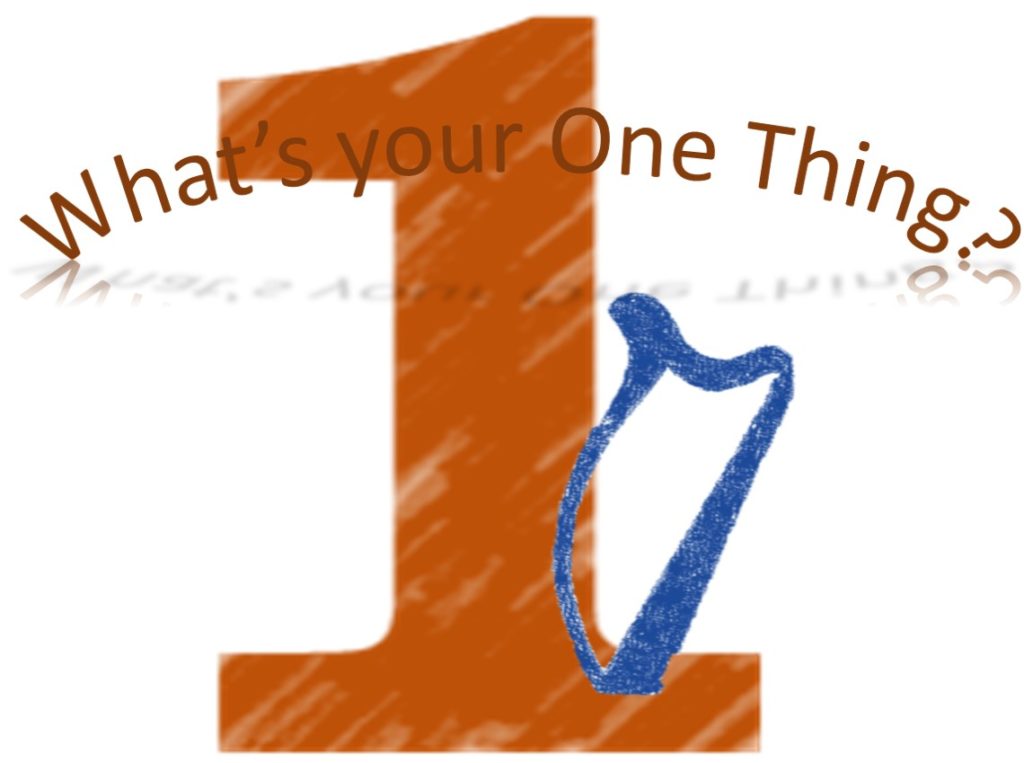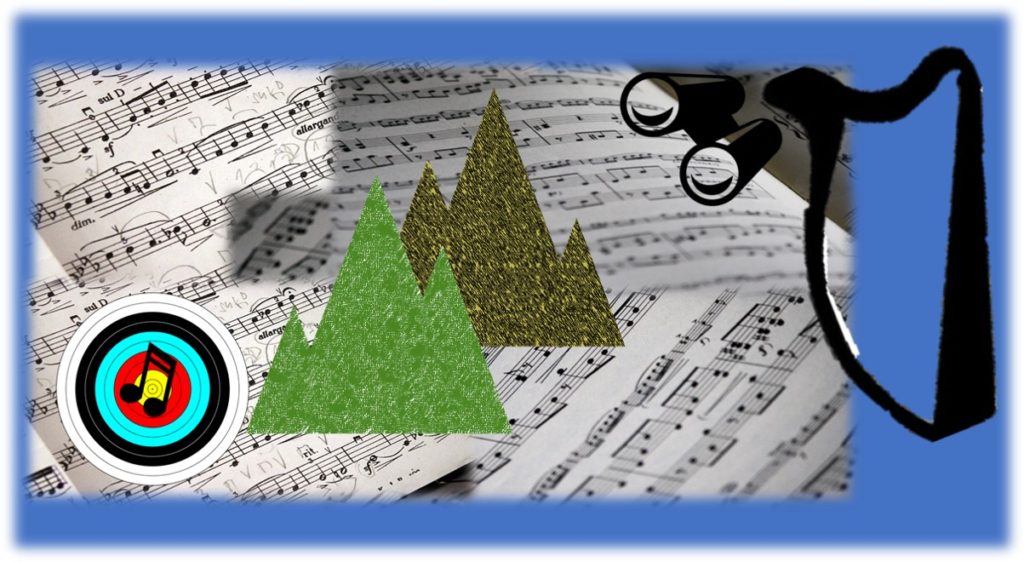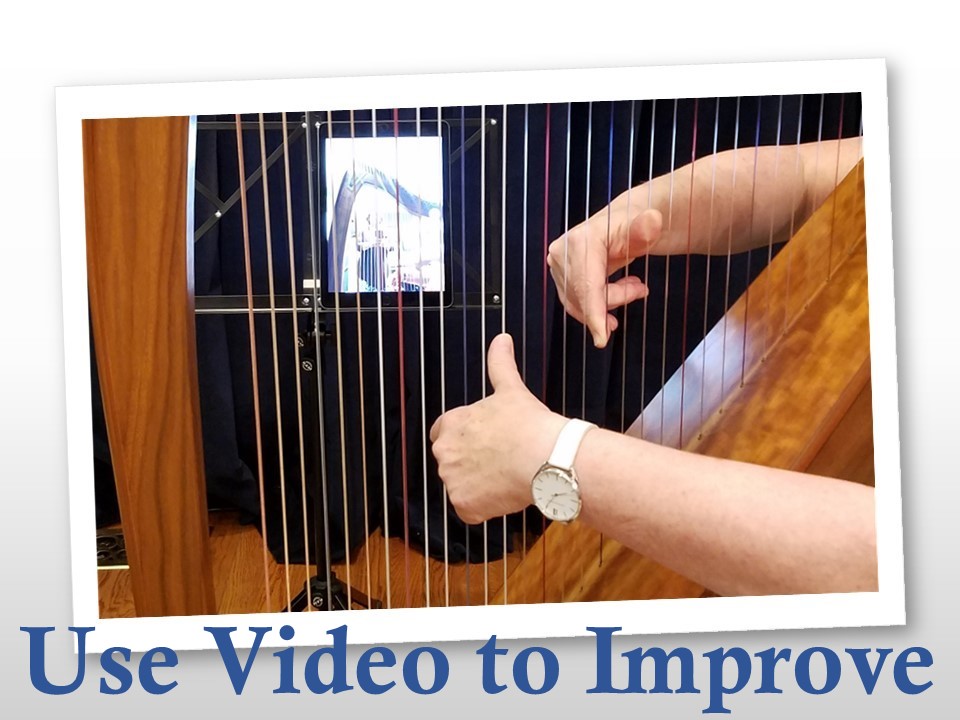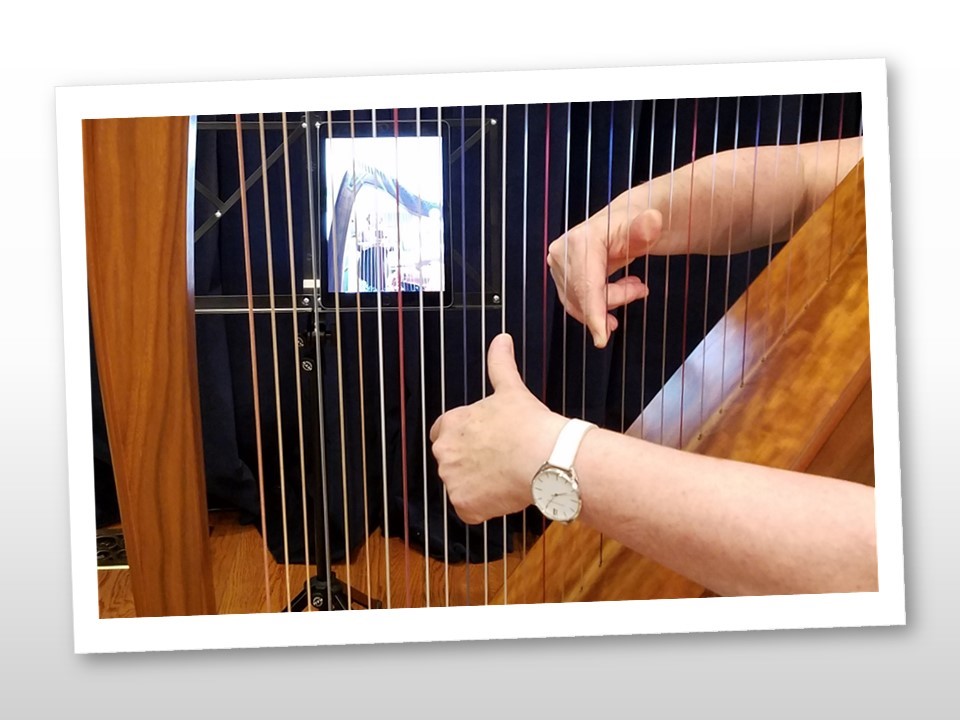I don’t just play the harp because it’s there. I really enjoy it. I look forward to the time I get to spend, whether it’s practicing for an event or just playing around. Of course, sometimes it’s work. And I do remember the very early days so clearly – when the certainty that you’ll never “get this” is ever so much higher than the surety that you will. But time passes and that feeling subsides.
Given that, but even so, I was taken aback when a new student asked me what would be the ONE thing that should be done within the allotted daily practice time that would take that student from a beginning beginner to intermediate harper in the short term?
It took me a bit of time to think of an answer. The easy – and inaccurate – answer came to mind immediately. I wanted to say – PRACTICE is the one thing. But that’s not only unkind and flip, it’s also wrong! Because practice – in and of itself – is not the one single thing that will make that movement from beginner to intermediate quick or even possible.
What?!? you say! That doesn’t sound like something you would say here in the blog. After all – look at all the blog posts you have written about the importance of practicing! You must have made a mistake there. But I haven’t. And I’m not contradicting myself either.
Because there is a one thing that every student can work on – starting from the first practice after the first lesson…and on and on until it’s time to stop playing (is that even a thing?). What would this magical one thing be?
FUNDAMENTALS!
Now, I’ve nattered on about fundamentals before, but…from the mouths of harp babes (as it were) we hear the true questions emerge – and the answer is the same – always the same.
So, no matter what level you find yourself – there are always fundamentals to revisit and address. If you’re just beginning, your one thing might be assuring that every finger goes back to your palm. And if you’re more than a beginner but not very advanced your one thing might be placing ahead. And if you’re very experienced, I really hope you’re not smugly thinking that this doesn’t apply to you because you can always be working on thinking ahead, and leveraging those skills you practiced as a beginner to inject more musicality into your tunes.
So take a minute to really think about what your one thing to focus on should be. Don’t be flip – really assess what you could best work on to improve yourself enough to move to the next level. Don’t forget to capture it in your journal so you can see your development. And having this in your journal will allow you to move from the first One Thing onto the second One Thing, the third, etc. Because you know there will always be a just One (more) Thing to work on.
What’s your one thing? Let me know if the comments!



